Introduction
From feasibility to refinement, the natural evolution of Samsung's priorities for its flagship foldable smartphone took just a couple of years. The Galaxy Z Fold4 of 2022 focuses on much-needed camera upgrades, and throws in some subtle physical polishing, all the while maintaining the core concept of the productivity-driven phone-turns-tablet form factor.

The camera setup of the Z Fold3 used some relatively ancient hardware, and the new model changes most of it. Having in principle the same wide-ultrawide-telephoto arrangement, the Z Fold4 gets more reach on the long end and a larger sensor main camera, while the ultrawide remains untouched. Mind you, it's still not a cutting-edge configuration - it's almost the same as the one on the Galaxy S22(+) with some fine print in the autofocusing section.
In the physical touches, we're seeing that the bezels have been trimmed down, the outer screen has adopted a slightly less tall aspect (still taller than virtually anything), and the whole thing now weighs ever so slightly less - all evolutionary changes that may or may be spotted in practice. It's certainly not the gapless foldable we've all been droning on that Samsung should make, while Chinese manufacturers are, in fact, making.
Other things you won't be getting on this iteration either include properly fast charging, Samsung instead keeping things at 25 watts of PPS-enhanced USB PowerDelivery. The battery capacity remains at 4,400mAh, but that hasn't really proven a pain point in the past, so we won't be making a big deal of it now either.
If anything, further advancements in the display tech (Samsung advertised a more power-efficient panel for this generation Fold), coupled with the Snapdragon 8+ Gen 1 chipset, itself not sourced from Samsung's chipmaking division but TSMC, might actually mean improved battery life - we'll get to that.

Speaking of the display, the foldable inner panel maintains the numbers of the old model - the diagonal is 7.6 inches refresh rate mazes out at 120Hz, and it's a granularly adaptive refresh rate, as befitting the Fold's high-end status. The outer panel matches the big one for refresh rate capability, and while the diagonal remains unchanged from the predecessor at 6.2 inches, the new aspect should make it slightly more convenient while also marginally increasing the usable area.
Naturally, you're getting stereo speakers, the side-mounted capacitive fingerprint sensor, an IPX8 rating (no dust, water only), and a couple of selfie cameras - one on the outside and another under the flexible display. Those seem to be dialed in now with no apparent reason to change them.
Samsung Galaxy Z Fold4 specs at a glance:
- Body: 155.1x130.0x6.3mm (unfolded), 155.1x67.1x14.2-15.8mm (folded), 263g; IPX8 water resistant (up to 1.5m for 30 mins).
- Display: 7.60" Foldable Dynamic AMOLED 2X, 120Hz, HDR10+, 1200 nits (peak), 1812x2176px resolution, 10.8:9 aspect ratio, 373ppi; Cover display: 6.20" Dynamic AMOLED 2X, 120Hz, 904x2316px, 23.1:9, 401ppi.
- Chipset: Qualcomm SM8475 Snapdragon 8+ Gen 1 (4 nm): Octa-core (1x3.19 GHz Cortex-X2 & 3x2.75 GHz Cortex-A710 & 4x1.80 GHz Cortex-A510); Adreno 730.
- Memory: 256GB 12GB RAM, 512GB 12GB RAM, 1TB 12GB RAM; UFS 3.1.
- OS/Software: Android 12L, One UI 4.1.1.
- Rear camera: Wide (main): 50 MP, f/1.8, 23mm, 1.0µm, Dual Pixel PDAF, OIS; Telephoto: 10 MP, f/2.4, 66mm, 1.0µm, PDAF, OIS, 3x optical zoom; Ultra wide angle: 12 MP, f/2.2, 123˚, 12mm, 1.12µm.
- Front camera: Under-display: 4 MP, f/1.8, 2.0µm, under display; Cover camera: Wide (main): 10 MP, f/2.2, 26mm, 1/3", 1.22µm.
- Video capture: Rear camera: 4K@60fps, 1080p@60/240fps (gyro-EIS), 720p@960fps (gyro-EIS), HDR10+; Cover camera: 4K@60fps, 1080p@30fps, gyro-EIS.
- Battery: 4400mAh; Fast charging 25W, 50% in 30 min (advertised), Fast wireless charging 15W, Reverse wireless charging 4.5W.
- Misc: Fingerprint reader (side-mounted); NFC; stereo speakers; Samsung DeX (desktop experience support), Samsung Pay (Visa, MasterCard certified), Ultra Wideband (UWB) support; stylus support.
Samsung Galaxy Z Fold4 unboxing
The unboxing experience of the Galaxy Z Fold4 brings few surprises. The phone arrives unfolded in a large squarish black box with bold 'Fold' lettering. And when we say the box is 'large,' it's only so in footprint - it's half-height since it's missing a charger, as has become the norm. There's still a USB-C cable bundled, still.

But the barebones retail package is easily forgotten once you actually get to hold the Fold4, so let's talk some about that.
Design, build quality, handling
Large screen on the inside, smaller one out front, waterproofing, cameras facing every which way, S Pen support - with the foldable fundamentals dialed in, Samsung has been able to focus on minute details for this year's flagship release. Things like tweaking aspect ratios, minimizing bezels, shaving off a few grams off the total weight - perfecting rather than disrupting.

The inner screen remains at 7.6 inches in diagonal, but it takes a different path to arrive at that number compared to the old model. The new, more squarish, aspect of the screen may have some minor implications on its usability (positive ones, we'd say), but in its materials and composition, it shouldn't be all that different from the Fold3's.
 Galaxy Z Fold3 (left) next to the Z Fold4
Galaxy Z Fold3 (left) next to the Z Fold4
The flexible layer above the OLED pixels is still only sort of glass as far as our understanding goes, even though Samsung and the product's (most likely) supplier Schott call it UTG (Ultra-Thin Glass). It's a fascinating subject but the gist of it is that you could make glass bend if you make it thin enough (under 100µm, but 30µm is what's usually used on smartphones), but if you make it that thin you run into other issues, so you need additional treatment and... well, other layers.

Untold structural layers aside, there's also Wacom's electromagnetic resonance grid in the sandwich that enables the S Pen functionality - a feat in itself on a foldable display. As was the case last year, you need a 'special' type of S Pen for use on the Fold because of its softer surface, and the phone will actively complain if you so much as bring one of the Galaxy Note or S22 Ultra styluses near its display (and also not register input, if you persist and poke it).
The S Pens that are compatible with the Fold are... well, the S Pen Fold Edition (which you can get bare, or as part of the Standing Cover with Pen case), and the S Pen Pro - all of these are sold separately. These specially designed styluses feature soft tips and internal dampers to ensure you won't scratch your Fold.

Because ultimately, the very top layer is plastic. In a way, it's a screen protector, but it's one of those protectors you shouldn't even think of removing - consider it an integral part of the display, even if some obscure youtuber or forum poster may say that their Fold is surviving without one just fine.
Plastic as it may be, it's a very nice-feeling protector, and it's nearly as smooth as real glass - not remotely as grippy to swipe on as early foldable screen implementations and somehow more premium than your garden variety plastic film found on other phones. Or at least we'd like to think that.
There are no weird cutouts to accumulate dust, and the protector reaches almost all the way to the bezels, so you won't be seeing a whole lot of its edges either.

And since we're here, you won't be seeing a whole lot of the internal selfie camera under normal conditions either. The under-display unit is most visible with the screen off and less so with the OLED pixels on top of it illuminated, but it is at no point a real eyesore. You'll know it's there, and you'll see it if you look up close, but in general use, the combination of the hardware and your brain ignoring unimportant details will make this camera effectively disappear.

What's harder to ignore is the still present crease along the vertical axis of this panel. We may have been more willing to dismiss it in previous generations where the tech was still in its infancy, but this fourth-gen ultimate foldable should be held to a higher standard.
The arguments remain that you probably won't be swiping across the crease all that often, and you won't be looking at the display at odd angles, thus minimizing the crease's negative effect on your perception of premiumness. We get those.
But then you do swipe across it or tap smack in the middle to change something about the multi-window arrangement, and you do feel it. And it's also fairly visible when you're looking at mostly white content at an angle - visible in that you're getting bluish shifts along the line.

Samsung's foldables have stuck to this design while competitors have adopted different bending geometries allowing them to achieve smoother, flatter panels when unfolded. It has been postulated on the internet that the reason for this is the inability (at least for now) to provide waterproofing on those other designs, and indeed, the Flips and Folds are the only foldables with an IP rating (IPX8, no dust/dirt/sand, just water resistance). It seems like Samsung is taking the sensible side in this trade-off, but we'd just like to have both - waterproofing and no crease, please?

Intertwined with the crease situation is the gap situation, one of multiple unique aspects of the hinge design. The Z Fold4 still folds in on itself, leaving a wedge-shaped air gap between the two panels, a rather visible one. On the one hand, that ensures the display halves aren't touching, but it also allows for debris to get in there while the phone is closed - a state that should otherwise be considered the safest. Smacking the panel closed with an object big enough inside is a dreaded scenario, but that's not limited to the Fold. Otherwise, the raised frame around the entire perimeter does make sure that there's no contact between the display surfaces.

Speaking of that hinge, it should be essentially unchanged from the previous generation - at least Samsung hasn't specifically pointed out advancements in the area. What that means is the hinge itself hasn't been waterproof, but its elements are coated and lubricated instead, while the two joining halves are sealed at the point where they meet.
It's hard to talk about the durability of the design beyond the marketing speak, which Samsung themselves have toned down too - perhaps in a bid to normalize the fordable form factor, something like 'it's so good that we don't have to specifically state how good it is.

Another standout feature of Samsung's hinge implementation is that it will happily remain at any angle between 75 and 115 degrees, enabling some use cases you can't get on other foldables, which mostly snap from closed state to open and back. We'd say that, all things considered, the crease is a sensible price to pay for all the good things you're getting in return.

The Fold4 is built using Armor Aluminum, just like the Fold3, but it's not like we know (or expect to know) what that means on an atomic level. Samsung did say last year with the launch of the Flip3 and Fold3 that its material is 10% stronger than what they had used previously, so there's that.

In more conventional terms (if still similarly outlandish when you think about it), the outer panels of the phone are made of Gorilla Glass Victus+, a Samsung exclusive formulation of Corning's latest protective glass.

The back panel has a satin finish and one of those intermediate efforts, where it still kind of picks up fingerprints, but not a lot, and it's easy to clean. It's also neither particularly grippy, nor the slipperiest around. A rather successful balance, we'd say.
Balancing is what the phone does when placed on its back, too. The visually unchanged camera assembly does make it prone to rocking from side to side if you try to type on it under those circumstances.

The cover screen of the Fold4 also got a change of aspect, moving away from the 25:9 (that's nearly 3:1, if you hadn't thought it that way) to a more manageable 23.1:9, while maintaining the diagonal. What you're getting is a slightly shorter panel with marginally larger area. Most importantly, though, there's a 3mm increase in width - a much needed development, particularly from a keyboard typing perspective.

Alongside the change in proportions, Samsung also managed to chisel the bezels, making for an even more refined end result.
It takes more than a passing glance to spot these changes, however, especially if you don't fondle foldables frequently. The Fold4's cover screen still is unusually tall and has a punch-hole selfie camera, and that's about all the immediately noticeable things about it.
 Galaxy Z Fold3 (left) next to the Z Fold4
Galaxy Z Fold3 (left) next to the Z Fold4
If you're coming from the Fold3, however, there will be a rather tangible difference in the feel of the frame. The Armor Aluminum rails are noticeably flatter this year, a trend we're seeing with recent Samsungs. While we'd argue that it's the nicer looking and feeling design, there were some folks around the office who found the new design harder to pry open than the curvier frame of the Fold3.

The shape of the frame is changed, but the location of the bits on it has remained the same. The power button on the right/rear half is placed just right for operating with either the left index finger or the right thumb. The capacitive fingerprint reader inside it doesn't discriminate and unlocks quickly and reliably with either digit - obviously, in table mode, your left index finger has no business there, but in the folded state, all is great.

The volume rocker is right above that power button and clicks as positively as on any other high-end Samsung, while the SIM slot is on the opposite half (dual nano SIM, no microSD option).
Both speakers are in the left/top portion of the Fold, a single mic is on the bottom while a total of three appear to be on the top. The USB-C port is in the center of the right/rear section, on the bottom.


Volume rocker above the power button, SIM slot at the opposite end • Top and bottom
The Fold4 measures 155.1x67.1x14.2-15.8 mm in its folded state - precisely as wide as the old model, 3mm shorter and 0.2mm thinner. The change in height is negligible, the reduction in thickness is hard to see or feel, while the extra screen on the front while maintaining the same width is much appreciated. You're unlikely to feel the 8 grams of weight savings, though the 263g number does sound a little better than 271g.

In the Fold4's tablet state, the numbers are 155.1x130.1x6.3mm, making the new device 2mm wider than the old one. Perhaps Samsung could continue this aspect evolution and culminate in a perfect square, with a 2:1 cover screen to complete the picture.
 Galaxy Z Fold3 (left) next to the Z Fold4
Galaxy Z Fold3 (left) next to the Z Fold4Aspect ratio tweaks, same greatness
The Galaxy Z Fold4 comes with the same display setup, in principle, as the predecessor, a setup established with the very first Fold and subsequently refined and made more usable each generation - a large and squarish inner display folds in half and hands off to a cover screen for less area-intense tasks. The Z Fold3 got a lot of it right already, the 4th generation adds another step in the pursuit of perfection.

The inner screen abandons the 4:5 aspect and now comes in at a more squarish 5:6 aspect (9:11.2 vs. 9:10.8, if you're wired to think in fractions of 9). The diagonal is still 7.6 inches, while the resolution is 1812x2176px and pixel density works out to 373ppi. Samsung now specifies the panel as capable of going up to 120Hz without making a big deal about how low it can go, and we'd agree it's about time the focus shifted away from the nitty-gritty of adaptive refresh rate behavior. In any case, it is capable of varying it depending on content and activity.
It's worth mentioning that this panel is branded Eco2 Plus (Eco Squared Plus) as opposed to the plus-less one of the previous generation, the plus promising significant advancements in power efficiency. But we'll get to that later.
Now let's talk brightness. We measured 1000nits square on the foldable display of the Z Fold4 under bright ambient lighting and with the auto brightness enabled - a small upgrade over the already class-leading Z Fold3 and way out of reach of the other large-screen foldables we've tested. The 'Extra Brightness' mode we saw on other high-end Samsungs this year has made it to the Fold and delivers the usual 800-ish nits at the far right end of the slider, while deactivating that toggle in settings will limit the manually attainable brightness to 500-ish nits. 500-ish is where the Huawei foldables max out, and the Find N is only slightly brighter.
It's worth pointing out that the foldable display on the Galaxy Z Fold4 is essentially as bright as high-end conventional displays, Samsung's own S22 series excluded (those can push 1200nits in our standardized 75% APL testing procedure).
| Display test | 100% brightness | ||
| Black, |
White, |
||
| 0 | 505 | ∞ | |
| 0 | 809 | ∞ | |
| 0 | 1000 | ∞ | |
| 0 | 489 | ∞ | |
| 0 | 922 | ∞ | |
| 0 | 490 | ∞ | |
| 0 | 582 | ∞ | |
| 0 | 506 | ∞ | |
| 0 | 469 | ∞ | |
| 0 | 542 | ∞ | |
| 0 | 505 | ∞ | |
| 0 | 802 | ∞ | |
| 0 | 919 | ∞ | |
| 0 | 521 | ∞ | |
| 0 | 803 | ∞ | |
| 0 | 494 | ∞ | |
| 0 | 829 | ∞ | |
| 0 | 1266 | ∞ | |
| 0 | 468 | ∞ | |
| 0 | 782 | ∞ | |
| 0 | 1214 | ∞ | |
| 0 | 852 | ∞ | |
| 0 | 1050 | ∞ | |
| 0 | 512 | ∞ | |
| 0 | 1065 | ∞ | |

The cover display has also been treated to an aspect tweak and now stands at 23.1:9 as opposed to the 25:9 of the previous generation. It's still taller than anything else, essentially, but it's a tangible step towards generally more useful proportions. Whether the change in this outer screen aspect led to the change in the inner one, or the other way around, the end result is that both are in a better aspect now.
Once again, the diagonal remains unchanged at 6.2 inches, while the resolution is now 904x2316px with a pixel density of 401ppi. This panel is also capable of reaching 120Hz and features granularly adaptive capability.

Comparing brightness between cover displays, the Fold4 isn't much of an upgrade over the Fold3, but it doesn't need to be - at over 1000nits, it's as good as they come. The Extra Brightness functionality does enhance your control over those nits, which can count as an upgrade. Again, other than Samsung's own S22 flagships, no other smartphone display is meaningfully brighter.
| Display test | 100% brightness | ||
| Black, |
White, |
||
| 0 | 486 | ∞ | |
| 0 | 802 | ∞ | |
| 0 | 1034 | ∞ | |
| 0 | 479 | ∞ | |
| 0 | 1001 | ∞ | |
| 0 | 505 | ∞ | |
| 0 | 785 | ∞ | |
| 0 | 514 | ∞ | |
| 0 | 725 | ∞ | |
| 0 | 472 | ∞ | |
| 0 | 601 | ∞ | |
| 0 | 494 | ∞ | |
| 0 | 829 | ∞ | |
| 0 | 1266 | ∞ | |
| 0 | 468 | ∞ | |
| 0 | 782 | ∞ | |
| 0 | 1214 | ∞ | |
| 0 | 475 | ∞ | |
| 0 | 762 | ∞ | |
| 0 | 852 | ∞ | |
| 0 | 1050 | ∞ | |
| 0 | 512 | ∞ | |
| 0 | 1065 | ∞ | |
Both the internal and the cover screens can go as low as 0.9nits - handy if you often find yourself browsing in absolute darkness.
When it comes to color reproduction, the Fold4 adopts the usual Vivid-Natural approach Samsungs have been known for. In Natural mode, you can expect excellent accuracy for sRGB content on both displays, the inner one possibly qualifying for 'exceptional' (average dE2000 of 1.0). Vivid mode is the wide gamut option, and it's not as precise when measuring for DCI-P3 target swatches (average dE2000 is 3.9 and 3.2 on the cover and internal display, respectively). Nudging the five-position color temperature slider a notch towards Warm improves things nicely.
Samsung lists the Fold4 as HDR10+-compliant, as is the norm with Galaxies. We got HDR content in YouTube and Amazon Prime Video, no issues. The Netflix situation is a bit more nuanced, as the app says it's not compatible with the Fold4. However, that's very likely due to the phone not having been released yet, and consequently not yet whitelisted by Netflix. We have never had issues with any streaming app on high-profile Galaxy phones before, so we are pretty sure the Z Fold4 won't be an exception once it hits the shelves.
The Motion smoothness menu item in settings gives you the expected two options - Adaptive and Standard (itself plenty adaptive too). Adaptive will set the ceiling at 120Hz, while Standard will limit the refresh rate to 60Hz, but in either mode the software will vary it depending on content, interaction with the phone and display brightness, and that applies to both displays.
You can expect to get the highest refresh rate according to the mode as long as you're touching the display, while leaving it alone for a couple of seconds will have it drop to 24Hz. Videos typically get a refresh rate to match the frame rate - that's worked with 24, 30, 48, and 60fps content in our experience, while 25 and 50fps videos seem to force the maximum RR constantly. Browsers will be allowed 120Hz in Adaptive when you're interacting with them and drop to 60Hz if there's moving content or 24Hz if the web page is static. This downswitching will only occur if the display brightness is above a certain threshold, while at dimmer levels, you can expect the full 120Hz constantly.

Games with high frame rate support are typically allowed the full 120Hz in Adaptive mode, though there was the occasional game that got capped at 60Hz even though we know it to support high frame rates on other phones.
There's also the matter that refresh rate and the actual frame rate that the renderer is running at the moment are two separate things. We got fps readings from the in-house GPUWatch tool as low as 1fps, while the Android refresh rate tool proudly displayed 24Hz. To sum it all up, the phone knows what it's doing - likely even better than we can tell what it's doing.
Samsung Galaxy Z Fold4 battery life
The Galaxy Z Fold4 comes with the same total battery capacity of 4,400mAh, split between two cells - one in each half of the phone. It's a smidge less than what the Oppo Find N (4,500mAh) or the Huawei Mate Xs 2 (4,600mAh) have, but the differences in chipsets, display size, software package, and, well... overall form factor make a comparison like this quite murky.
We'd love to be able to report what battery life we got out of the Fold4, but unfortunately, our review unit was carrier-locked, and we weren't able to test standby and talk time without a compatible SIM. If we get our hands on another unit more willing to comply with our network, we'd be sure to run the remaining tests.
That didn't interfere with the screen on tests, however, so we do have numbers for those. On the big screen, we got 14:02h of Wi-Fi web browsing and 14:26h of video playback - nearly two hours more in the browser test when comparing against the Fold3 and a less-tangible half hour or so more in looping videos. Repeating the same tests on the cover screen returned 14:59h and 16:33h, a relatively minor improvement.

Video test carried out in 60Hz refresh rate mode. Web browsing test done at the display's highest refresh rate whenever possible. Refer to the respective reviews for specifics. To adjust the endurance rating formula to match your own usage - check out our all-time battery test results chart.
Charging speed
One of our main beefs with Samsungs over the past several years is that they're behind the curve in terms of charging speed. Next to phones that advertise in excess of 100W of charging capability (the numbers game there is stupid in its own way, but that's a different topic), and actually charge in 20ish minutes, Samsung's models hover in the 60-80minute range, irrespective of what capacity battery they have or what charging rate they list on the tin (the 45W vs. 25W charging speeds weren't really that different). The foldables have been mostly outliers in that that they're even slower.
The lack of a charger in the box doesn't make us feel any better about the whole thing, but that battle appears to be long lost, so we might as well get over it.
We tested the Galaxy Z Fold4 with the most mainstream 25W Samsung adapter that supports USB PowerDelivery with the PPS extension to the standard. We reckon that's the adapter you'd get if you don't already have a PD-capable one, plus some carriers are bundling one of these units with Fold purchases anyway.

The results can be viewed from one of two standpoints. On the one hand, the Fold4 is a notable improvement over its predecessor, taking 1:19h from flat to full and showing 50% at the half-hour mark (1:46h and 33% on the Fold3). But on the other hand, the Mate Xs 2 stands at 85% after being plugged in for 30 minutes, and takes just 43 minutes to full. The Find N isn't quite as quick, but it's still better than the Fold.
Admittedly, the Mate and the Find do it using proprietary chargers, but then again, they at least include chargers in the retail package.
30min charging test (from 0%)
Higher is better
- Xiaomi 12 Pro (120W)
100% - Oppo Find X5 Pro
91% - Huawei Mate Xs 2
85% - Huawei Mate X2
80% - Xiaomi 12S Ultra
73% - Samsung Galaxy S22
63% - Samsung Galaxy S22+ (25W)
62% - Samsung Galaxy S22 Ultra (25W)
61% - Samsung Galaxy S22 Ultra (45W)
60% - Oppo Find N
57% - Samsung Galaxy Z Flip4
55% - Apple iPhone 13 Pro Max (65W PD)
55% - Samsung Galaxy Z Fold4
50% - Sony Xperia 1 IV
47% - Apple iPhone 13 Pro Max (20W Apple)
42% - Samsung Galaxy Z Fold3 5G
33%
Time to full charge (from 0%)
Lower is better
- Xiaomi 12 Pro (120W)
0:21h - Oppo Find X5 Pro
0:40h - Huawei Mate Xs 2
0:43h - Xiaomi 12S Ultra
0:50h - Huawei Mate X2
0:58h - Samsung Galaxy S22 Ultra (45W)
0:59h - Samsung Galaxy S22+ (25W)
1:02h - Samsung Galaxy S22
1:03h - Samsung Galaxy S22 Ultra (25W)
1:04h - Oppo Find N
1:05h - Samsung Galaxy Z Flip4
1:15h - Samsung Galaxy Z Fold4
1:19h - Sony Xperia 1 IV
1:42h - Samsung Galaxy Z Fold3 5G
1:46h - Apple iPhone 13 Pro Max (20W Apple)
1:46h - Apple iPhone 13 Pro Max (65W PD)
1:54h
The Z Fold4 supports wireless charging, but there's still no certification listing for it on the WPC's website. Judging by the Flip4's entry and going from past experience, you can expect to find the Basic Power Profile and up to 4.4 watts of power in the certification. The phone can actually take up to 15 watts if you use Samsung's own peripherals, and some third-party charging pads may deliver more than the 4.4 number. It's not unusual for wireless charging ratings to be a bit fluid like that. There's also reverse wireless charging where you can charge stuff off the Fold's back at up to 4.5W.
Speaker test
The speaker setup on the Samsung Galaxy Z Fold4 is the same in principle as the one found in the previous model. There are two speakers, and both are in the left half of the phone when unfolded (top half when folded) - one speaker is up top and fires upwards, the other is on the bottom and fires downwards. The top speaker doubles as an earpiece for voice calls when the device is folded, and it will also direct sound at you when playing back video or other content. Conversely, if you have the Fold in its tablet state, looking at the large screen, that earpiece will be firing away from you.

In our test, the Z Fold4 landed in the 'Average' bowl for loudness, a notch below the Z Flip4 and two below the Z Fold3. That said, the Fold4 sounds superior to both of those, with notably more presence in the low end, while still doing great with vocals and treble. The Fold3 is distinctly more mid-forward, and the generally well-balanced Flip4 isn't quite as capable in the bass region. The Find N, meanwhile, is significantly lacking in low frequency oomph, leaving just the Mate Xs 2 as a superior sounding foldable at this point - it is substantially better than the Fold, mind you.
It's worth pointing out here that the published result for the Z Fold4 is obtained with the screen open and facing our loudness meter, as that's the more natural use case, in our opinion. That arrangement, however, places the earpiece at the back and consequently leaves some sound directed away from the testing equipment.
With the Fold4 folded and facing the microphone with its cover screen, we naturally got a higher loudness reading, to the tune of 26LUFS, which qualifies for a 'Very good' score. It also makes for a somewhat more prominent mid-high rendition, now that you actually have those frequencies directed at you. It's not a huge difference, though, and we find this use case largely irrelevant anyway. But for what it's worth, it means that ringtones in a loud environment will likely be heard as well as on other phones with a 'Very good' rating, not like those 'Average' ones.
Use the Playback controls to listen to the phone sample recordings (best use headphones). We measure the average loudness of the speakers in LUFS. A lower absolute value means a louder sound. A look at the frequency response chart will tell you how far off the ideal "0db" flat line is the reproduction of the bass, treble, and mid frequencies. You can add more phones to compare how they differ. The scores and ratings are not comparable with our older loudspeaker test. Learn more about how we test here.
Android 12L, One UI 4.1.1, powerful multitasking options
The Galaxy Z Fold4 runs Android 12 with Samsung's One UI 4 on top, and both the core and the overlay are in unusual incarnations. The OS is 12L - the tablet- and foldable-specific version Google introduced earlier this year on Samsung's third-gen bendy phones. One UI, meanwhile, is 4.1.1 - the extra .1 is to set it apart from the mainstream flat Galaxy builds.

Even though most of the software experience is unchanged from the Fold3, there's a lot to unpack, so let's take things in their natural order. We'll start with the Always On display, for one, because it's the first thing you normally see before unlocking the Fold, but also to illustrate a point.
It's a good example of a feature that works identically on both the inside and the cover display, depending on whether the Z Fold4 is open or not. That applies to most of the display settings, including refresh rate, brightness and color. That's a common theme - Samsung has done an exceptionally good job of differentiating between the two displays for some features, where it makes sense, while naturally leaving shared settings for others, all without breaking the general UX flow.
The lock screen is also shared between the two displays in pretty much all of its aspects, including the clock style, widget selection, and notification logic. All except for the wallpaper selection, which can be done on an individual basis for the two panels. This is one area where we feel that maybe some segmentation wouldn't hurt, though.


Lock screen: Cover display • Main display
The Home screen and App drawer, however, are superb examples of Samsung seamlessly separating out customization for the two panels. While the options here may look deceptively identical, you get to set them independently while the Z Fold4 is open and while it is closed. This includes everything from the app grid, widget selection, layout, and wallpapers. You can even have entirely different shortcuts on the two panels.




Cover home screen • Cover app drawer • Main home screen • Main app drawer
However, should you prefer to have the layout the same between the two, it's as easy as enabling the Screen mirroring feature. That will sync changes between the two UIs, and thanks to the internal display being essentially two cover screens side by side, you'll basically always see two outer home screens next to each other on the inner screen. The feature is available on the Fold3 in its current state, but we'd swear it wasn't there when it launched.
And if we label this a new feature, let's also mention something else here, that you may have spotted in a few of the screenshots above - the Taskbar. Apparently, one of the L bits from Android 12L and implemented on the Fold4 but not the Fold3 (yet?), it's a bar that shows a minimized view of the dock icons when you're away from the homescreen. You can also have it display recently used apps, and you can drag apps from there to the screen to launch them in multi-window mode. There's also a shortcut to the app drawer in the left corner too.
Who said multi-window? One of the Fold4's main attractions, the ability to have several apps displayed simultaneously in a number of configurations, is unrivaled on other foldables. For example, the simpler dual-split can either be horizontal or vertical, and no other phone seems to be allowing a top-and-bottom view.
You can control the split one way or the other by simply dragging the middle bar. Dragging is also how you can quickly and easily get content from one window to the other. The list of supported content types has been expanding and will likely continue to do so. Text and picture dragging, likely the most commonly used, is supported almost universally.




Controlling a basic two-way multi-tasking split
Clicking the dots on the middle bar provides a few options, including a quick way to swap the places of the two apps and another to change the orientation of the split. The third button saves this multi-tasking configuration as an entry in the App panel (more on that later), home screen, or taskbar.
Each app gets its own little oval control bar near the top while in multi-window mode. It can either be used to grab and drag the app for repositioning or bring up a few options with a click. These include the ability to go full-screen on the given app or collapse it further into a floating window.



Manipulating individual apps in a multi-window configuration
Samsung refers to this floating window as Pop-up View. Some apps won't cooperate fully, and some rare ones will outright refuse to go into this mode. To address that, however, One UI does include a Labs tab inside the Advanced features menu, with a toggle switch that can force multi-window and pop-up view on any app, regardless of whether the developer included support or not, with typically a pretty good success rate.
There's also a three-way multi-window split. It is a bit harder to initially set up, but once you dial it in just the way you like it, you just save it for later use in the taskbar or one of the other two spots mentioned above.
You can still drag content around in this setup and basically jump from app to app instantly. It is important to note that some apps won't necessarily be able to run concurrently while in this mode. Notable limitations include the ability to only have one video playing, both for convenience reasons and because of limitations in the Android video decoding pipeline. Some apps that do real-time updating might do it slower or put it on pause while in a small window and not in focus. It all depends on how they are coded, but overall most apps and a large chunk of Android are made to facilitate a single-app execution model first and foremost.
Nevertheless, you can even go beyond these three apps and rake multitasking even further with Pop-up View windows. You can pile up to five of these on top of a three-way split, making for a total of 8 "active" apps at the same time.
You can freely resize and drag these individual floating windows around and even set their transparency, although in most cases, that tends to add to the chaos rather than reduce it. You can also collapse the windows into what is commonly known as a "chathead". If you collapse multiple apps in this way, they will end up grouped in a folder-like manner, which helps keep things tidy.
There are other nuances and limitations to consider and discover, as well. For instance, certain apps refuse to run more than once, which is a thing Android developers can explicitly request in an app manifest for one reason or another.
Overall, Samsung went above and beyond in the multi-tasking features department. Perhaps even a bit too far in practical terms. Still, if you think there is a particular setup that will work great for your needs, chances are that the Z Fold3 can facilitate it, which is all that matters.
If you still find yourself wanting more freedom and an even more PC-like experience, the Z Fold4 does include Samsung DeX support, both wired and wireless to a monitor or TV, as well as a Windows PC, with a specific client.

On to what Samsung calls Flex mode or Flex view, a UI concept introduced on the Fold2 once the hinge could be kept stable at intermediate angles between 75 and 115 degrees. The phone is aware that it is in this physical state and lets the Android OS and any running app know. In this sense, Flex View is just a Samsung marketing term for triggering behavior already baked into modern versions of Android, specifically designed to make apps more aware of the current state of foldable displays, allowing them to adapt their UI.
The video player can do it, and so can the Gallery app. Both have their respective controls on the bottom and the content on the top. The Gallery app simply dedicates a trackpad-like touch area for navigating back and forward between images to the bottom half. A bit awkward and with limited usability, which honestly seems to often end up being the case with Flex View implementations.
The camera app is the most notable example of Flex View working in a beneficial manner. The idea is that, again, you get to have your controls on the bottom half of the display and the viewfinder on top. This is definitely useful for taking both selfies and shorts with the main camera while the phone is sitting on a flat surface. It just feels more natural.
Unfortunately, due to the fact that the main camera array and the cover display are on different sides of the Z Fold4, there is no way to leverage Flex view mode to take a selfie with the main cameras (while looking at a viewfinder). Some third-party apps are also on board, like YouTube, though it's not like its Flex view implementation is particularly for anything other than a stand replacement.




Flex view: Video player • Gallery • Camera • YouTube
For all the Fold-specific bits, a lot of the overall visual polish in the Fold's UI is actually a function of One UI itself and its ongoing refinement over the years. In that sense, many elements can be considered a "standard" Samsung affair, and you can read about those in any remotely recent Samsung smartphone review.
One of those bits does still relate to the whole productivity theme, so we'll say a few words about it as well - Edge panels, and specifically the Apps panel, which is the only one enabled by default (hardly an accident).
The Apps panel is convenient for a number of reasons. It holds a set of app shortcuts in two groups - ones you add there yourself and ones that it picks from your recent usage, though you can disable the latter. If you have 8 or fewer icons in the Apps panel, it will shrink to a single row saving you some screen estate.
There is also the ability to save any particular multi-tasking configuration as a shortcut there. This includes the apps, their relative position, and window size. Both dual and the newer triple-split multi-tasking setups can be saved, and recent setups also get automatically suggested.
What's gone missing is the Apps panel's pinning functionality, now deprecated by the Taskbar we mentioned before.
Performance and benchmarks
The Galaxy Z Fold4 is equipped with the Snapdragon 8+ Gen 1 - Qualcomm's latest. There's no regional divide with the Samsung foldables like there is with the regular flagships, so there's no Exynos version.
The SD 8+ Gen 1 is a familiar beast, and we've seen it in a number of phones already. Samsung's Flip4 and Fold4 are the first foldables to feature it that we get to test, however, so it's still interesting how the form factor affects the numbers.

Galaxy Fold4s come in three storage configurations - our review sample is the base 256GB variant, and there are also 512GB and 1TB options. RAM is always 12GB.
The Fold4 posted predictably great results for CPU performance in both single-core and multi-core GeekBench - it's among the highest multi-core figures we've seen, too (though, obviously, not by any meaningful margin). For what it's worth, the Fold is always slightly ahead of the Flip.
Naturally, the Snapdragon 888-powered Oppo Find N is noticeably lower down the chart, and the similarly equipped Mate Xs 2 is even further below, underdelivering for its hardware. It remains to be seen where the Xiaomi Mix Fold 2 will rank - mostly for academic arguments.
GeekBench 5 (single-core)
Higher is better
- Galaxy Z Fold4
1337 - Xiaomi 12S Ultra
1324 - OnePlus 10T (High performance mode)
1321 - Galaxy Z Fold4 (cover display)
1316 - Asus Zenfone 9 (High Performance)
1313 - Galaxy Z Flip4
1270 - Galaxy S22 Ultra (1440p)
1180 - Xiaomi 12 Pro
1169 - Galaxy Z Fold3 5G
1095 - Galaxy Z Fold3 5G (cover display)
1095 - Oppo Find X5 Pro
1002 - Oppo Find N
985 - Oppo Find N (cover display)
985 - Huawei Mate X2
956 - Huawei Mate X2 (cover display)
956 - Huawei Mate Xs 2
900 - Huawei Mate Xs 2 (Unfolded)
884
GeekBench 5 (multi-core)
Higher is better
- Asus Zenfone 9 (High Performance)
4338 - Xiaomi 12S Ultra
4300 - Galaxy Z Fold4 (cover display)
4028 - Galaxy Z Fold4
3981 - Galaxy Z Flip4
3913 - OnePlus 10T (High performance mode)
3907 - Xiaomi 12 Pro
3682 - Galaxy S22 Ultra (1440p)
3657 - Oppo Find N
3478 - Oppo Find N (cover display)
3478 - Oppo Find X5 Pro
3433 - Huawei Mate X2
3389 - Huawei Mate X2 (cover display)
3389 - Galaxy Z Fold3 5G
3239 - Galaxy Z Fold3 5G (cover display)
3239 - Huawei Mate Xs 2 (Unfolded)
3131 - Huawei Mate Xs 2
3079
In Antutu, the Fold's superiority over the Flip is even more pronounced, and the same goes for its advantage over the Find N and the Mate Xs 2. The Fold4's result is nearly exactly the same as what we got out of our Exynos S22 Ultra too. Other implementations of the SD 8+ Gen 1 do have a slight edge.
AnTuTu 9
Higher is better
- Asus Zenfone 9 (High Performance)
1083092 - Xiaomi 12S Ultra
1039412 - OnePlus 10T (High performance mode)
1016958 - Oppo Find X5 Pro
1012896 - Xiaomi 12 Pro
985226 - Galaxy S22 Ultra (1440p)
968359 - Galaxy Z Fold4
964530 - Galaxy Z Fold4 (cover display)
958817 - Oppo Find N
822513 - Galaxy Z Flip4
800001 - Oppo Find N (cover display)
799386 - Galaxy Z Fold3 5G
752218 - Galaxy Z Fold3 5G (cover display)
724906 - Huawei Mate X2 (cover display)
661044 - Huawei Mate Xs 2
658825 - Huawei Mate Xs 2 (Unfolded)
641608
In graphics benchmarks, the Fold4 naturally posts very different scores depending on whether you're carrying out the test on the big display or on the cover screen. How relevant the cover screen results are for anything or anyone is debatable - it's not the most convenient setup for gaming - but here they are as well.
GFX Aztek ES 3.1 High (onscreen)
Higher is better
- Galaxy Z Fold4 (cover display)
78 - Asus Zenfone 9 (High Performance)
67 - Galaxy Z Flip4
60 - OnePlus 10T (High performance mode)
60 - Oppo Find N (cover display)
50 - Galaxy Z Fold3 5G (cover display)
49 - Galaxy Z Fold4
43 - Xiaomi 12S Ultra
38 - Huawei Mate X2 (cover display)
36 - Xiaomi 12 Pro
36 - Oppo Find X5 Pro
35 - Huawei Mate Xs 2
34 - Oppo Find N
32 - Galaxy S22 Ultra (1440p)
30 - Galaxy Z Fold3 5G
25 - Huawei Mate X2
20 - Huawei Mate Xs 2 (Unfolded)
19
GFX Aztek Vulkan High (onscreen)
Higher is better
- Galaxy Z Fold4 (cover display)
72 - Asus Zenfone 9 (High Performance)
69 - Galaxy Z Flip4
62 - OnePlus 10T (High performance mode)
60 - Oppo Find N (cover display)
45 - Galaxy Z Fold4
42 - Xiaomi 12S Ultra
39 - Xiaomi 12 Pro
37 - Oppo Find X5 Pro
36 - Galaxy Z Fold3 5G (cover display)
34 - Huawei Mate Xs 2
34 - Oppo Find N
33 - Galaxy S22 Ultra (1440p)
29 - Huawei Mate Xs 2 (Unfolded)
21 - Huawei Mate X2 (cover display)
19 - Galaxy Z Fold3 5G
18 - Huawei Mate X2
12
GFX Car Chase ES 3.1 (onscreen)
Higher is better
- Galaxy Z Fold4 (cover display)
98 - Asus Zenfone 9 (High Performance)
89 - Galaxy Z Flip4
74 - Galaxy Z Fold3 5G (cover display)
60 - Oppo Find N (cover display)
60 - OnePlus 10T (High performance mode)
60 - Galaxy Z Fold4
59 - Huawei Mate Xs 2
51 - Oppo Find N
51 - Xiaomi 12S Ultra
51 - Huawei Mate X2 (cover display)
46 - Xiaomi 12 Pro
46 - Oppo Find X5 Pro
44 - Galaxy Z Fold3 5G
38 - Galaxy S22 Ultra (1440p)
37 - Huawei Mate X2
29 - Huawei Mate Xs 2 (Unfolded)
28
In the offscreen runs, the Fold4 proves to be a capable performer as well, posting scores up there with the best. With the phone folded, the results were again consistently slightly lower than when it's unfolded.
GFX Aztek ES 3.1 High (offscreen 1440p)
Higher is better
- Xiaomi 12S Ultra
46 - Galaxy Z Flip4
46 - OnePlus 10T (High performance mode)
46 - Asus Zenfone 9 (High Performance)
46 - Galaxy Z Fold4
45 - Galaxy Z Fold4 (cover display)
42 - Xiaomi 12 Pro
41 - Oppo Find X5 Pro
40 - Oppo Find N
31 - Oppo Find N (cover display)
31 - Galaxy S22 Ultra (1440p)
31 - Huawei Mate X2
29 - Huawei Mate X2 (cover display)
29 - Huawei Mate Xs 2 (Unfolded)
28 - Huawei Mate Xs 2
28 - Galaxy Z Fold3 5G
20 - Galaxy Z Fold3 5G (cover display)
17
GFX Aztek Vulkan High (offscreen 1440p)
Higher is better
- Asus Zenfone 9 (High Performance)
52 - Xiaomi 12S Ultra
51 - OnePlus 10T (High performance mode)
51 - Galaxy Z Fold4
50 - Xiaomi 12 Pro
45 - Galaxy Z Flip4
45 - Oppo Find X5 Pro
44 - Galaxy Z Fold4 (cover display)
43 - Galaxy S22 Ultra (1440p)
35 - Huawei Mate Xs 2 (Unfolded)
31 - Huawei Mate Xs 2
31 - Huawei Mate X2
31 - Oppo Find N
30 - Huawei Mate X2 (cover display)
29 - Oppo Find N (cover display)
29 - Galaxy Z Fold3 5G
19 - Galaxy Z Fold3 5G (cover display)
19
GFX Car Chase ES 3.1 (offscreen 1080p)
Higher is better
- Xiaomi 12S Ultra
104 - Asus Zenfone 9 (High Performance)
104 - OnePlus 10T (High performance mode)
103 - Galaxy Z Fold4
102 - Xiaomi 12 Pro
96 - Oppo Find X5 Pro
94 - Galaxy Z Fold4 (cover display)
92 - Galaxy Z Flip4
83 - Galaxy S22 Ultra (1440p)
76 - Oppo Find N (cover display)
75 - Oppo Find N
73 - Huawei Mate Xs 2 (Unfolded)
72 - Huawei Mate Xs 2
71 - Huawei Mate X2
61 - Huawei Mate X2 (cover display)
56 - Galaxy Z Fold3 5G
55 - Galaxy Z Fold3 5G (cover display)
55
3DMark Wild Life Vulkan 1.1 (offscreen 1440p)
Higher is better
- Xiaomi 12S Ultra
10533 - Asus Zenfone 9 (High Performance)
10469 - Galaxy Z Fold4 (cover display)
10398 - Galaxy Z Fold4
10382 - Oppo Find X5 Pro
9758 - Xiaomi 12 Pro
9664 - Galaxy Z Flip4
8460 - Galaxy S22 Ultra (1440p)
7437 - Oppo Find N (cover display)
5931 - Oppo Find N
5928 - Huawei Mate Xs 2 (Unfolded)
5830 - Huawei Mate Xs 2
5814 - Huawei Mate X2 (cover display)
5751 - Huawei Mate X2
5693 - Galaxy Z Fold3 5G
5635 - Galaxy Z Fold3 5G (cover display)
5563
Similarly, we observed improved stability in sustained load benchmarks when we ran them on the big screen compared to the cover screen runs. The differences weren't huge but were consistent, and consistency is good. The CPU throttling test on the outer screen showed a pretty gradual performance ramp down and leveled off around the mid-70s, which isn't half-bad for these high-end chips in a body that, we imagine, can't be thermally constrained. The GPU is less of a stable performer, getting a 55% stability rating in 3D Mark Wild life stress test, though that is mostly par for the course in the flagship class.
Z Fold3 meets S22 when it comes to camera hardware
The Galaxy Z Fold4 comes with a very similar rear camera setup to the one found on the Galaxy S22 and S22+. The selfie situation, meanwhile, is the same as on the previous Fold - an under-display unit masked by a checkered pattern of pixels on the flexible panel, and a conventional punch-hole style module on the cover display.

The rear camera trio is lifted straight off the S22, you'd think at first glance, but that's not entirely so. The fine print starts with the fact that the main camera on the Fold4 is based on the Samsung GN3 sensor, whereas the S22s have an GN5 at the core. Both sensors have a 1/1.56" optical format, 50million 1.0µm pixels, and a Tetrapixel filter array (Quad Bayer in Sony speak).
Where the two differ is in the autofocusing - the GN5 uses Dual Pixel Pro, while the GN3 in the Fold4 relies on a slightly less sophisticated Dual Pixel method. This official Samsung video illuminates the difference, but the gist of it is that Fold will be less susceptible to detecting phase differences top to bottom - just left to right. While the 'Pro' versions is much appreciated, however, we wouldn't say that the plain Dual Pixel has ever left us wanting.
The lens in front of this sensor has a 23mm equivalent focal length (so plenty wide), the aperture is f/1.8, and there's optical stabilization.
For the ultrawide, our Fold reports the Sony IMX 258 - a fairly ancient imager with a 1/3.06" optical format and 1.12µm pixels. Its native resolution is 13MP, but Samsung lists it at 12MP, and that's the size of images it outputs. While the sensor itself has AF capability, the camera as a package doesn't support it. The lens covers a 123-degree field of view, as per Samsung's specs, and has an f/2.2 aperture. That's the Fold3's contribution to the rear setup, while the S22 uses a nicer 1/2.55" sensor with 1.4µm pixels.

By all accounts, at least the tele has to be lifted off the S22. It uses the same S5K3K1 sensor (1/3.94", 10MP, 1.0µm) with the same stabilized lens with an f/2.4 aperture. The actual focal length is the same, too (7.0mm), but the Fold reports an equivalent focal length of 66mm now (69 or 70mm on the S22, depending on who you ask).
Either way, you'd be getting 3x (ish) optical zoom, which is a much-needed upgrade over the 2x zoom on the Fold3. We wouldn't have complained if there was a 10x periscope like on the Mate X2, but maybe next year. Ah, there's also the matter that the telephoto shots will come out at 12MP, too, for the sake of standardization.
On the selfie side of things, we have a traditional 10MP punch-hole unit on the cover screen. That one dates to the Fold2 and is based on the Sony IMX 374 (1/3", 1.22µm) paired with a fixed-focus lens with an equiv. focal length (as per EXIF data) of 25mm and an f/2.2 aperture.

Then there's the under-display camera that hides behind the folding screen. A chessboard array of display pixels and transparent patches lets just enough light for the 16MP sensor underneath (IMX 471, 1/3", 1.0µm) to output 4MP still images and 1080p video. The lens reports the same 25mm equivalent focal length and an f/1.8 aperture.
Camera app and making use of the form factor
If you keep the Z Fold4 folded, its camera app UI is essentially the same as on any other Samsung, with only the unusual aspect ratio making things appear slightly different. Swiping left and right will switch between all available modes, and there's an option to re-arrange or remove some of the modes from the viewfinder. Vertical swipes in either direction will switch between the rear cameras and the cover selfie camera.
The settings icon is located in the upper left corner of the screen, and you don't get separate setting screens for photos and videos since the options aren't that many in total. Grid lines, location data, Screen optimizer, etc. - the usual stuff can be found there. The full resolution mode on the primary camera is triggered from the aspect options, which is a rather unintuitive bit, but that's how Samsung does it.
There's a Pro mode, too, where you get granular exposure controls (ISO and shutter speed, plus exposure compensation) and manual focus with peaking, but no live histogram or the option to operate anything but the main cam.
The one thing that sets the UI apart from other Samsungs is the 'Selfie' icon in the top left corner above the settings cogwheel - that enables the rear-camera selfie mode. It asks you to unfold the phone, after which it transfers the UI and viewfinder on the cover screen for easy operation while mostly disabling the now-unfolded main display - which now faces away from you.

Holding the phone in this mode with one hand and tapping on the UI isn't super convenient, but you can just about work your way to pressing the shutter release with the right index finger or left thumb - more complex operations are best done with both hands. Naturally, 'palm shutter' is available, and, if you're serious about this whole thing, an additional Bluetooth remote release is always an option.

Then there's the viewfinder on the large screen. Taking pictures this way does transport you into that frowned-upon territory of tablet photography, but it does allow the other useful aspect of the form factor - letting your subjects preview the picture as it is taken. Enabling the cover screen is a tap away, and in that mode, there are no actionable controls on it - just a live feed from the sensor. That is to say, there's only one button - for going into the rear selfie mode, with controls on the cover screen (that's not available on the Fold3, mind you).

Daylight image quality
In bright daylight, the Samsung Galaxy Z Fold4's primary camera captures pleasing images. Colors have plenty of pop, just about bordering on too much, but still not quite there, we'd say, and we didn't encounter any white balancing issues or color casts. The high contrast also contributes to the overall expressive look, while roll-off into the extremes is well judged, so you get detail in both shadows and highlights.
The 12.5MP of resolution provide the expected level of detail, and it's rendered in a very mature way, without excessive sharpening - foliage looks natural, and there aren't halos around contrasting edges. There can be a fair bit of noise, visible in lower midtones even at base ISO (apparently ISO 20), but a little party noise never killed nobody?












Daylight samples, main camera (1x)
The 50MP images don't offer significant detail advantages to justify what is usually a 3x file size compared to the regular 12.5MP photos. There's a minor penalty in dynamic range and a more reserved color rendition.




Daylight samples, main camera (1x), 50MP
The 50MP mode does have an extra sub-mode called Detail enhancer, however, and that does capture more detail indeed. It takes a couple of seconds to process, indicating there's some heavier image stacking going on, but it's worth the wait - check out the difference in foliage or texts in photos captured with Detail enhancer off and then on.






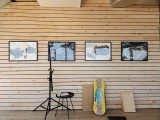
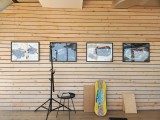
Daylight samples, main camera (1x), 50MP, Detail enhancer: Off • On • Off • On • Off • On • Off • On
Zoomed-in shots from the Fold4 look very good too. Detail is crisp, without obvious signs of the upscaling that goes on to get from the native 10MP resolution of the camera to the 12MP resulting photos. Sharpening remains conservative, and noise is minimal here. Colors are nicely matched to the main camera's rendition, and dynamic range is excellent.










Daylight samples, telephoto camera (3x zoom)
The ultrawide maintains that positive impression and captures very good photos. It's not the sharpest ultrawide on a flagship phone, but it's not bad either, and it holds up well all the way to the corners. It resolves a lot of detail too - that is, unless you shoot something from way up close, in which case the lack of autofocus will get in the way. Color reproduction is in line with the other two, no complaints there.
Perhaps one fault we could come up with here is that shadows tend to be too dark - with a field of view this wide and the general contrasty approach we see on the Fold4, you're bound to end up with parts of your image that can use a boost. Even fairly liberal action with the shadows slider in your image editing software of choice won't make them look overdone in that classic overtly HDR way of the olden days. And while that may reveal some extra noise, 1) it's not terrible, and 2) what we said about noise a few paragraphs earlier.











Daylight samples, ultrawide camera (0.6x)
Low-light image quality
In low light, the Fold may choose to apply auto Night mode processing under certain conditions, as indicated by a cresent icon in the viewfinder. You can enable and disable it on a per-scene basis. It's not too aggressive to kick in, however - out of the following scenes, it only engaged in the 4th and 8th ones, when shooting with the main camera. When it does activate, it captures the same images you'd get if you're in the dedicated Night mode.
With no Night mode at play, there's still some solid HDR action going on, so dynamic range is good, though scenes dominated by shadows can end up on the dark side of usual. There are no signs of desaturation so you'd still get vibrant colors when there's enough light for the phone to work with, and the Fold generally exhibited no issues with white balance in all sorts of different lighting. Detail is good in the better-lit areas, but things are soft-ish and noisy in the shadows.








Low-light samples, main camera (1x), Auto Night mode off
In Night mode, there's a noticeable improvement in the shadow rendition - the darker the scene in the first place, the more beneficial. A smidge better highlight preservation is also to be seen, though overall, it's still not the most dramatic of Night modes. Noise performance is improved, resulting in smoother areas of solid color, but some actual texture may be lost along the way.








Low-light samples, main camera (1x), Night mode
We didn't encounter the auto Night mode crescent when shooting with the telephoto camera, so it's entirely up to you to choose between Photo and Night modes. The differences are, again, not dramatic, but not insignificant either, and we'd recommend going for the Night mode as a general rule.
In Photo mode, there will be a bit more noise, slightly harsher highlights and mushier shadows.






Low-light samples, telephoto camera (3x), Auto Night mode off
Night mode will improve the rendition of tonal extremes, revealing some detail in the shadows and lower midtones and also minimizing haloing around point light sources. The slightly heavier sharpening is still well within reason. Color reproduction remains fault-free in either case.






Low-light samples, telephoto camera (3x), Night mode
The ultrawide camera was a bit more inclined to summon the auto Night mode - it chose to engage in scenes 3, 7, and 8 below and overall in roughly one in three scenes.
While the higher rate is welcome, it's still not quite enough because with no Night mode to help out, the ultrawide images are looking rather dim, soft, and noisy.








Low-light samples, ultrawide camera, Auto Night mode off
So on the ultrawide, too, we'd recommend just straight up switching to Night mode when light levels drop. All three adjectives above get addressed to one extent or another, and photos now have improved dynamic range, especially with respect to the shadows. Sharpness gets a kick, and the noise is wiped clean.








Low-light samples, ultrawide camera, Night mode
Once you're done with the real-world samples, head over to our Photo compare tool to see how the Samsung Galaxy Z Fold4 stacks up against the competition.



Samsung Galaxy Z Fold4 against theHuawei Mate Xs2 and the Oppo Find N in our Photo compare tool
Portrait mode
Portrait mode on the Fold4 gives you options to shoot at 1x and 3x zoom levels, each one coming from the respective camera.
The 3x magnification puts you away from the subject, removing all sorts of discomfort from sticking a camera up one's nose. It also allows for more flattering facial features thanks to the perspective achieved from the longer subject distance. Quality is good, particularly in well-lit conditions, but also quite reasonable in dimmer indoor settings. The subject separation is excellent, the bokeh looks natural, and HDR is working on full blast.
The 1x zoom level does come with a small quality advantage which will get bigger in darker surroundings. Conversely, the wide focal length doesn't look quite so good at distances that will get you head-and-shoulders portraits, but can work for wider shots.
Selfies
Or for selfies with the rear camera at arm's length - both portrait ones, and regular photo mode ones. What's worth pointing out here is that Portrait mode handles even messier hair competently.




Selfie samples, main camera (1x), Portrait mode




Selfie samples, main camera (1x)
More important here is the ability to capture ultrawide angle selfies - with a viewfinder, that is. That lets you frame shots with more people or with context, though the lack of AF on the ultrawide camera does limit its usefulness for whacky close-up perspectives.




Selfie samples, utlrawide camera (0.6x)
If you can't be bothered to shoot with the phone unfolded, or you'd rather not draw attention to your selfie shooting, the cover camera will do nicely. It, too, is missing autofocus, but its focus distance is excellently judged, so you'd get sharp results on your mug, very well-detailed ones too. It's a bit less enthusiastic in terms of color than the rear modules, but not all the way to be called dull.






Selfie samples, cover selfie camera
There's a portrait mode on this one too, and it's generally very good too, though it's not quite as proficient when dealing with unruly hairstyles.






Selfie samples, cover selfie camera, Portrait mode
Then there's the internal selfie camera, the one underneath the foldable display. While you could, technically, use it for taking photos, the vastly superior alternatives make that a very illogical pursuit. The 4MP selfies are passable if more than a little hazy - that's good enough for video calls, which seem like the only sensible use for this one.
Video recording
The Samsung Galaxy Z Fold4 supports video recording up to 8K resolution with its primary camera - at 24fps only, as is the norm with Samsungs. Both the main and the telephoto can do 4K at 30fps and 60fps, while the ultrawide maxes out at 4K30.
The inner selfie camera supports 1080p at 30fps and 60fps, though we can't see why you'd be using that particular unit for recording video. The outer selfie camera, on the other hand, makes more sense as a recording device and supports 4K at 30fps and 60fps.
Video stabilization is available in all modes on all cameras, and it can be disabled if you have your own means to stabilize your footage. There's an option to use the h.265 codec, as opposed to the default h.264, while 8K, in particular, is only encoded using h.265. Audio is always recorded in stereo at 256kbps.
4K footage out of the Fold4's primary camera is good but somewhat lackluster. The detail is so-so - we're seeing the results of relatively heavy sharpening but not quite the expected level of crispiness. Global contrast is high - a bit too high, in fact, and you could be looking at black-ish crushed shadows in more complex scenes. Colors could use a nudge in saturation, though if you're one to appreciate a more neutral look to your videos, you will find it here. There's hardly any difference between 30fps and 60fps frame rates.
The telephoto leaves a more positive impression, particularly among telephotos. Footage is respectably sharp while looking less processed than the main camera's. Colors are a nice match between the two, with the good and the bad consequences of that. The still high-ish contrast works better for this tighter framing where you're less likely to have a scene with quite so wide dynamic range. Again, there's no appreciable difference between 30fps and 60fps.
The ultrawide doesn't like to develop its shadows in video either, but for what it's worth, it complements the main unit very well. It's a similar story with color reproduction too. Sharpness and detail we'd rate as acceptable.
Stabilization is excellent on the Galaxy Z Fold4. Both the ultrawide and the main camera (30fps and 60fps alike) will competently remove walking shake and turn it into a gentle float, and they will stay planted on a subject if you're simply standing and pointing the phone at something. Pans show no jerky transitions, either.
Out of the telephoto, both at 30fps and 60fps, you can expect stable footage from a distance - not quite tripod-like as there's some minor waviness left over, but it's still very good.
In low-light scenarios, the Fold4 does disproportionately better, so to speak. It's not quite as sharp as a Xiaomi Ultra, of course, be it 11 or 12 gen, but it does manage to capture good detail. Dynamic range is nicely wide, and halos around light sources are well controlled. Colors don't seem to suffer from the lack of light and, if anything, are looking better than during the day.
The ultrawide is nowhere near that level of performance. It produces noticeably softer videos, and we'd say they're softer and noisier than the S22 ones, which should be using essentially the same hardware.
The telephoto can't do wonders at night, and it struggles to expose darker scenes or darker areas in contrastier scenes - you can count on softness and/or noise in there. Give it some light to work with, however, and you'd be treated to some respectably sharp footage with nice colors, too.
When it comes to selfie videos, there are again a bunch of options (as in stills) with some principal differences between them. Shooting with the main rear cameras should generally mean better image quality, though that's not necessarily the reality we observed. In any case, you will get a blurrier background for some nice subject separation. However, with the stabilization enabled, the field of view can be pretty narrow to comfortably get anything more than your head in the frame (when recording horizontally, which is the only acceptable orientation for video). Interestingly enough, the 60fps got us sharper and more detailed footage than the 30fps one - not dramatically so, but the difference was there.
The ultrawide rear camera will help a lot with the coverage offering a much wider field of view. Then again, the lack of AF, lower image quality, and no 60fps option, significantly limit your options.
Perhaps your best bet for selfie video recording is the cover camera, which captures a wider field of view than the main rear one, so you don't have to stretch your arm excessively, and while fixed-focus, this one is tailored for short distances.
Also, you actually get higher video quality out of the cover camera for this use case than you do from the main one. It's slightly better at 30fps than at 60fps, which is a more logical outcome.
Its downside is that it can't blur the background nearly as much as the primary camera, though that can be seen as an advantage if you're after more context for your videos rather than subject separation.
Here's a glimpse of how the Samsung Galaxy Z Fold4 compares to rivals in our Video compare tool. Head over there for the complete picture.



Samsung Galaxy Z Fold4 against the Huawei Mate Xs 2 and the Oppo Find N in our Video compare tool
Competition
The Galaxy Fold4 maintains the MSRP of last year's model and with the whole inflation thing going on, that €1800/$1800 price tag is starting to almost look appealing. Okay, not so fast.
 Galaxy Z Fold3 (left) next to the Galaxy Z Fold4
Galaxy Z Fold3 (left) next to the Galaxy Z Fold4
Particularly not when less than €1200/$1200 gets you the old Fold3. And that's from Samsung.com - better deals might be available if you shop around. Sure, the 2022 version charges faster, maybe lasts a bit longer and has better cameras. But it's no cameraphone any more than the 3 is, and the 3 has essentially the same form factor and displays, S Pen support and IP rating - it isn't fundamentally worse at being a Fold, which is sort of inherently so given that the 4th gen is only adding cosmetic touches to the Fold-ness without altering the core.
The large foldables that are available globally from official channels aren't all that many, and 'globally' can mean different things. The Huawei Mate Xs 2 may not be available in the US, but you can snatch one in Europe if you're adventurous enough - certainly more adventurous if than you're just eyeing the Fold. The Huawei is by definition more vulnerable, its plastic flexible display exposed at all times, and it doesn't have the Fold water resistance. But it doesn't have to carry an extra display everywhere it goes, it's sexier in its extended state, and the minimal crease also scores it points against the Fold. The Galaxy is losing in charging speed, but winning big in battery life and software package, while cameras are more or less a toss-up.
In a similar boat in terms of pros and cons is the Oppo Find N, though there are nuances. Not global by any means, the China-only Oppo foldable does comfortably work with the Google suite (unlike the Mate), and if you were to gray-import one, chances are you'd save a few hundred €/$ compared to either of the other two. This too isn't a cameraphone, strictly speaking, and it's neither here nor there when comparing to the Fold. The Galaxy's battery life looks better, the Oppo charges faster, the Galaxy has better displays, but the Oppo's are easily good enough. The Fold is vastly superior in its productivity functionality on the large display, but the Oppo is perhaps not geared for productivity at all - it's more compact form factor trying to appeal to a slightly different crowd.

Of course, if you're after a truly pocketable foldable, the other type is where you should be looking for an alternative - the likes of the Galaxy Flip4 and Huawei P50 Pocket will give you just that while sacrificing productivity, and to some extent battery life. Plus, they are equally great as conversation starters if you want to flex on your backward friends with their boring non-folding phones - not the best reasoning to go for a foldable one, but we can't ignore it. Each comes with its own sets of pros and cons too so perhaps a trip to the Flip4's review is a good start.
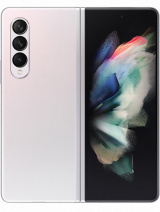
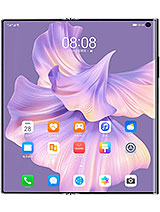


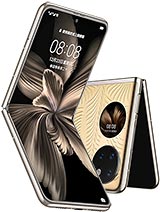
Galaxy Z Fold3 5G • Huawei Mate Xs 2 • Oppo Find N • Galaxy Z Flip4 • Huawei P50 Pocket
Verdict
We're past the point of considering foldable phones as just proof-of-concept halo devices. While durability concerns remain, screen replacement incentives from Samsung and, by now, several years of foldables in circulation should help overcome those, admittedly, semi-reasonable fears.
A few of the beefs we've had with Samsung foldables haven't really been addressed on this one. The gaping folded screen is one of those and the only possible saving grace is if that indeed is the only currently feasible way to get the IP rating. We're confident the engineers will figure out a solution for next year's design.
Then there's the charging. While indeed improved this year, the charging speed is still nowhere close to where industry-leading implementations stand. Our complaint is not exclusive to the Fold4 either - in fact, all Samsungs are slower than competing efforts from anyone who isn't Apple or Google.
And lastly, the camera. Yes, the arguments stand that the Fold's priorities are elsewhere, and the form factor allows no room for larger modules, and it would make an already pricy device even more expensive. These can be countered one way or another, from our perspective at least, but ultimately if Huawei can make a proper quad-cam Mate X2 with a big-sensor primary, 10x zoom and an AF-ing ultrawide, maybe so too can Samsung.

Don't get us wrong - while hardly ground-breaking, the cameras are an improvement to last year's setup. Plus, thanks to the form factor and a well thought out interface the Fold is arguably the best cameraphone for selfies - perhaps that clashes a bit with the stereotypical productivity-driven target audience, but we won't judge, and why couldn't there be several target audiences?
Mind you, those who are after productivity are unlikely to find a superior package than the Fold4 - in smartphone or smartphone-like form, that is. The combination of the new Android for large screens, Samsung's proprietary One UI add-ons, and the stylus support, is simply unrivaled.
The superiority of Samsung displays is manifested on the Galaxy Fold4 too, with the internal display not only being flexible, but also as bright as the company's conventional ones (short of the Ultras), and way brighter than other foldable panels. It's apparently plenty efficient too, since we got improved battery life on this year's model and the competition is behind in this metric as well.

To wrap this up, let's say that the Fold4 is not perfect. But it's not like there are readily available alternatives everywhere and the ones you could come up with have their own sets of issues. The Fold3 was already the most well-rounded and feature-packed foldable on the market then, and the Fold4 can easily claim that title now.
It comes with the same nominal price tag as last year's model at launch, and with the generational improvements accounted for and an economy that's seen better days, that's no small feat. Even at MSRP, the Galaxy Fold4 can make sense to the right buyer, though the sensible thing would be to wait a month or two for the inevitable price drop.
Pros
- New aspect makes cover screen more suitable for general use.
- Samsung's foldables remain the only ones in the business with an IPX8-rated waterproofing (no dust protection).
- Displays are roughly twice as bright as the foldable competition, on par with conventional ones.
- Impressive battery life in onscreen tests for a foldable.
- Feature-rich software with unmatched multi-tasking functionality and S Pen support.
- Camera system is a meaningful step up, the unique selfie capabilities through the cover display can be a pro on their own.
Cons
- No change on the hinge gap situation - the gap remains. The crease remains fairly prominent too.
- Charging speed has been improved but is still behind the competition.
- More or less the same camera system as in the S22 that runs for less than half the Fold's asking price.
from GSMArena.com - Latest articles https://ift.tt/qx0U8ow
via IFTTT
Bagikan Berita Ini






























































0 Response to "Samsung Galaxy Z Fold4 review"
Post a Comment